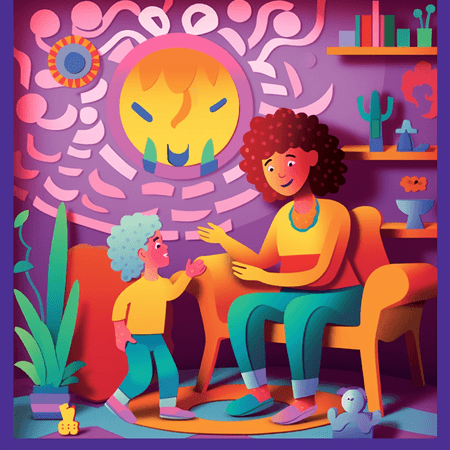The Powerful Benefits of Storytelling for Kids

Category: Uncategorized
Created At: 2025-04-22
In a world where screens dominate and attention spans are shrinking, the history of storytelling for kids is evolving as a tool for sparking imagination, boosting language skills, and strengthening emotional intelligence. But with modern tools like AI storytelling, the age-old tradition of weaving tales is evolving, offering new, interactive, and engaging ways to captivate young minds.
So how can we embrace this powerful practice and make storytelling more meaningful and exciting for children? Let’s dive into the benefits, methods, and magic of storytelling for kids.
Why Storytelling for Kids Matters More Than Ever
Stories do more than entertain. They shape a child’s worldview, teach empathy, and help develop cognitive and communication skills. From fairy tales at bedtime to adventures powered by AI storytelling apps, narratives are a powerful way for children to learn about themselves and others.
Whether told aloud, read in books, or experienced through interactive platforms, stories build memory, spark curiosity, and provide a safe space for kids to explore emotions and problem-solving.
When Should a Child Start Storytelling?
You don’t need to wait until your child is speaking in full sentences. Even toddlers benefit from listening to simple stories with rich visuals and expressive narration. As early as age 2 or 3, children can begin to create their own stories using pictures or toys. By age 4 or 5, they often start forming simple narratives that show the building blocks of storytelling.
Starting early encourages creative thinking and helps children learn the structure of language and narrative, skills that will serve them in school and beyond.
How Do You Teach Children Storytelling?
Teaching storytelling doesn’t require a formal lesson plan, it starts with conversation, imagination, and play. Here are some simple ways to nurture storytelling in kids:
- Model storytelling: Share personal stories about your childhood or create silly tales together.
- Use prompts: Show them a picture, toy, or object and ask, “What’s happening here?”
- Encourage sequencing: Help them tell stories with a beginning, middle, and end.
- Ask open-ended questions: “What happens next?” or “Why did the dragon do that?”
- Practice often: Make storytelling a regular part of playtime, reading, or bedtime.
With consistency, kids become more confident in crafting and sharing their own narratives.
What Are the Three Key Elements of Storytelling?
Every great story, whether it comes from a child’s mind or an AI storytelling app, has three core elements:
- Character: Who is the story about? Characters give the story a face and a voice.
- Setting: Where and when does the story take place? A vivid setting draws listeners in.
- Plot: What happens? The plot ties everything together through conflict, climax, and resolution.
Helping kids understand these basics can make their storytelling more structured and impactful, even as their imagination runs wild.
How to Make Storytelling Interactive for Kids
Interactive storytelling keeps kids engaged and allows them to become co-creators in the narrative. Here are a few fun strategies:
- AI Storytelling Tools: Platforms powered by AI can generate personalized stories based on a child’s name, interests, or drawings. These tools make storytelling dynamic and tailored.
- Story Dice or Cards: Use images or words to spark story ideas. Kids can roll the dice or draw cards to decide what comes next.
- Act it out: Turn the story into a mini play or puppet show. Movement and role-playing boost memory and creativity.
- Digital Storytelling Apps: Let kids choose characters, settings, and outcomes through apps designed to let their imagination run free.
These methods make storytelling not just a listening experience, but an active one, encouraging creativity and critical thinking.
Embracing the Future: The Role of AI Storytelling
AI storytelling doesn’t replace the human touch, it enhances it. With AI, kids can co-create stories, discover new vocabulary, and explore endless plot twists. It’s especially useful for parents and educators looking to keep storytelling fresh and personalized.
Imagine a bedtime story where your child is the hero, battling space monsters or exploring hidden kingdoms, created in seconds with the help of an AI tool. It’s a fusion of creativity and technology that opens new doors to engagement.
Storytelling for kids is more than a fun pastime, it’s a developmental superpower. And with the rise of AI storytelling, there are more ways than ever to ignite a child’s love for stories.
Start small, stay consistent, and most of all make it fun. Whether it’s told by candlelight, acted out with sock puppets, or generated by AI, a great story stays with a child forever.
